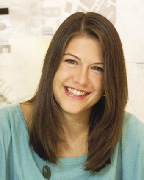Overuse of the Word green
What is green and who has it?
What isn't green" these days? Green has become the marketing catchphrase of 2008. So much so that green is heading toward being an ambiguous word, which presents an opportunity to redefine green within the context of urban development. "Going green" doesn't have to just mean creating sustainable open space but should also consider the social and economic benefits of the public realm. Â
Open space can be defined as any outdoor area inhabited by living things.  Although typically considered open space, the public realm encompasses all universally-accessible outdoor places and spaces primarily, but not exclusively, within the urban areas we work and live.  It is a "living room" or gathering space for human communication, passive and active recreation, performance and celebration. The sustainable movement is encouraging the expansion of open space, but what about expanding the public realm?
The Case for Increasing the Public Realm
The case for increasing open space has been made:  it reduces operating and insurance costs, decreases litigation and vacancy rates, and creates tax incentives as well as a more affordable tax base. These benefits result from proper site and open space selection, planning and design. What developers may overlook is the value obtained from designating this open space as publicly accessible.
The benefits of incorporating the public realm into a project are substantial and measurable. Increased public support, decreased mitigation costs, and faster public review periods minimize or prevent obstacles traditionally encountered during the project's scope. The increased curb appeal and enhanced neighborhood outdoor interaction leads to increased property values. The cycle is complete with the ultimate lessening of the community tax base due to decreased crime and improved community safety and welfare.  It's a winning proposition.
Where are there opportunities for turning open space into the public realm
Where is there left to build in traditionally urban environments?  Not surprisingly, the trend is development over or under current, previous, or rerouted transportation modes. One of Copley Wolff Design Group's (CWDG) recently completed projects is the Central Artery Wharf District Parks on the Rose Kennedy Greenway. This landmark project added acres of public green space to an area of Boston previously consumed by highways and concrete. Â
Boston has recently seen a flurry of interest in the development of air rights parcels, generally over transportation modes, which unloads a wealth of new opportunities. Proposed air rights sites currently under consideration include developing the Columbus Center in Boston's Back Bay and the ramp parcels along the Rose Kennedy Greenway. Other development trends focus on the reclaiming of traffic lanes for pedestrian use and the building on current and proposed roofs. Â
Case Study: Â Air Rights Parcels:
CWDG is currently providing landscape architecture and planning services for the proposed mixed use development that will occupy the Turnpike Air Rights Parcel 7 for John Rosenthal and the Meredith Kenmore/Fenway Dev. Group, LLC. This project is a unique Smart-Growth, transit-oriented development that will vastly increase the public realm, help revitalize Kenmore Sq. and improve the quality of life in the Kenmore, Fenway, and Audubon Circle neighborhoods.  As Rosenthal's vision explains, this project will repair the public realm by eliminating the void created by the Mass Pike with buildings and public spaces designed to create lively public spaces."
Case Study: Â Sidewalk Expansion: One of Boston's recent successes of reclaiming the public realm, designed by CWDG for the City of Boston Parks and Recreation Department, is the redesign of Commonwealth Avenue (see ad image #3). Â This project scope extends Commonwealth Avenue from Kenmore Square to Brighton Avenue where an additional twenty feet of open space was added to the sidewalk and MBTA median by eliminating one travel lane in each direction. Â Traffic was calmed, green space increased and an overall feeling of graciousness and grandeur was returned to the area.
The Future of Open Space and the Public Realm in Development: Developers and the public are becomingly increasingly savvy to the importance of incorporating the public realm into open space. Â As successful projects are completed and the benefits of this type of planning and design become more tangible and measurable, both in aesthetic, economic and community value, the public realm will become an expected part of any future development. Â Gone are the days where the developer only asks, "what's in it for me?" Now it's important to ask, "what's in it for us?"
Melissa Braun, RLA, ASLA, is project manager at Copley Wolff Design Group, Boston, Mass.
Tags:
Turning green open space into green cash: The value of the public realm
October 15, 2008 - Green Buildings







